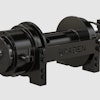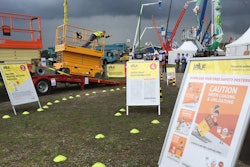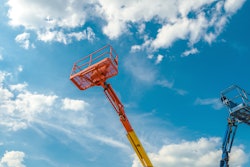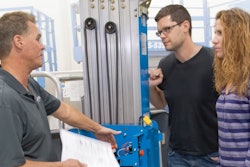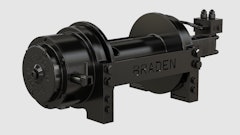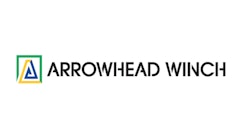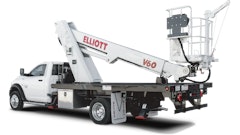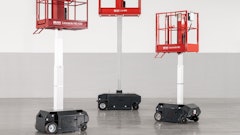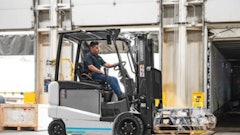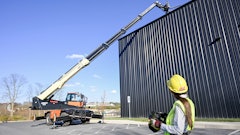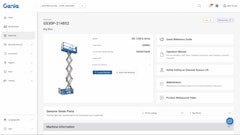
In 2022, the U.S. MEWP rental market boomed to exceed prepandemic levels, though some key indicators such as rental and utilization rates have yet to return to levels seen in 2019. Uncertainty around inflation and energy prices as well as persistent supply chain issues and the ongoing conflict in Ukraine cloud the outlook slightly for 2023 to 2024.
MEWP rental revenue reached a record high, a direct consequence of the country’s rapid market growth, rising by 15 percent to reach $13.6 billion. Total fleet size expanded, while rental companies were able to increase rental rates by an average of 5 percent in 2022. Utilization rates increased to an all-time high of 73 percent, though these are expected to fall back once supply chain issues abate.
Rental market value grew 15 percent year over year and is expected to remain at these elevated levels over the next two years, owing to the U.S.’s continuing strong economy. Rental revenue increased as a result of rental companies increasing rental rates and expanding fleet size in line with increasing demand in the market. Demand is expected to remain high, though revenue growth may slow down over the next few years.
Cross hire grew slightly in 2022, owing to growing demand and continuing delays in the fulfilment of orders for new MEWP machines. In many countries in Europe, Chinese manufacturers have stepped into the breach where long lead times and delays to OEM fulfilment have stifled fleet growth; tariffs have meant this has not been a viable alternative in the U.S.
Overall, the U.S. total fleet size increased by around 10 percent across 2022, adding more than 70,000 units to the country’s estimated total MEWP fleet. The U.S. fleet is forecasted to continue growing in 2023. The total number of units in the U.S. MEWP fleet is expected to reach almost 850,000 units by end of year 2023. For comparison, the European fleet stood at a total of approximately 340,000 units at the end of 2022.
Within the total U.S. fleet, all MEWP categories saw similar increases in 2022, with the exception of particularly robust growth rates reported for spider/tracked lifts, owing to their versatility and suitability for use in tight spaces or on rough terrain. Spider lifts are increasingly used in forestry, gardening, painting and industrial cleaning. Overall fleet mix remained broadly the same as in previous years and is expected to remain relatively unchanged in years to come.
Average revenue per MEWP unit rose by 5 percent in 2022. After a sudden drop in 2020 at the height of the pandemic, average rental revenue partially recovered in 2021. As rental companies expect to be able to further increase rental rates and, amid ongoing levels of demand, they expect it to drive up average revenue per unit by 3 percent in 2023.
With unprecedented market demand and both inflation and MEWP purchase prices rising, rental companies were forced to substantially increase rental rates in most European countries, leading to an average rise of around 4 percent in 2022.
The American Rental Association (ARA) strikes a word of caution. Following 2022’s vibrant equipment rental markets across the U.S. and Canada, the construction and industrial industries should prepare for limited revenue and growth this year, according to expert economists who provided an updated outlook during the 2023 ARA Show.
While the IIJA infrastructure bill, introduced in 2021, is set to inject up to $1.2 billion into related projects, its impact will not fully be felt until 2024, and even then, the industry will only see 1.9 percent growth for construction and industrial rental. Peak spending related to IIJA work will not surface until 2025.
Despite these ripples, the long-term market in the U.S. looks positive. The percentage of access equipment in rental fleets deployed in mega projects defined as projects with a value of $400 million or more has more than doubled over historical levels.
The U.S. MEWP rental market remains oriented toward construction applications and exhibits around a 75:25 ratio between construction and nonconstruction end uses, which has remained largely unchanged since 2015 and is expected to remain so over the next few years. Both construction and nonconstruction subsectors experienced a healthy level of activity in 2022. While commercial remains by far the strongest construction market, in nonconstruction subsectors, warehouse activities and wind energy were reported to be experiencing the strongest growth in end-use demand.
After a significant increase in 2021, MEWP rental companies were able to further increase investment in 2022. An additional increase in the amount of investment is expected in 2023.
Chinese manufacturers were affected considerably by the tariffs imposed last year by the U.S. Government on MEWPs made in China entering the U.S. However, this has not stopped them from seeking business in the country. A solution being adopted by some of those manufacturers is building factories in Mexico, where labor is less expensive.
MEWP fleet size in the U.S. grew by 10 percent, as rental companies resumed increasing fleet size in a bid to cap utilization rates from further rises. Utilization rates rose to 73 percent on average. Despite lead times improving on new OEM MEWPs, rental companies reported backlogs persisting in 2022-2023.
Average payback period of MEWPs remained steady in 2022, after previously declining by around nine months, reflecting the high utilization rate for rental equipment in the U.S., which largely returned to prepandemic levels over the course of 2022.
The average retention period increased by six months in 2022, to stand at five years and eight months on average, compared to five years and two months in 2021. Lead times on the delivery of new equipment recovered slightly, but backlogs remain.
Another issue in the U.S., pointed out by Italian spider lift manufacturer CTE Lift, is rising interest rates, combined with the direct extra cost of power, and borrowing rates. This has had a particularly detrimental effect on smaller “mom & pop” rental companies.
Exhibitions continue to demonstrate their value postpandemic. The 2023 CONEXPO-CON/AGG was confirmed as a resounding success. A record-breaking 139,000 visitors were registered through the gate at the Las Vegas show grounds. To order a copy of the IPAF Rental Market report, please see ipaf.org/reports.
